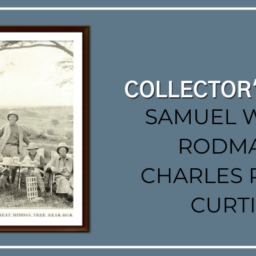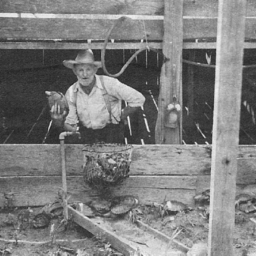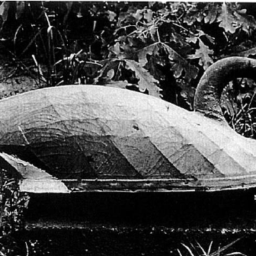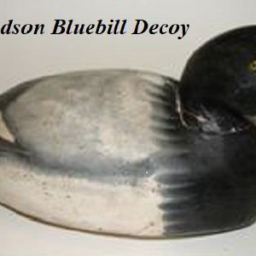
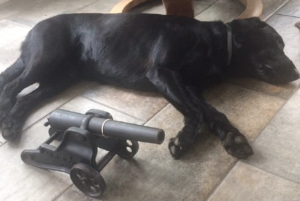
My Grandfather was in elementary school at the time of this story. I will guess fourth or fifth grade, that would make it about 1916. The Winchester Repeating Arms company made and patented a fully functional toy cannon in 1901. The original design was a black powder muzzleloader just like a real cannon. Now they’re manufactured to fire 10 gauge shotgun shells, blanks. You can still buy them as another company now holds the patent. Marketed as blast cannons or signal cannons. In any event, they made a lot of noise and were considered superior to common fireworks in 1916. One came up for auction recently at a decoy auction here on the Shore. That is what prompted this recollection.
The year is 1916, Scottsville, Indiana is the location, and for exciting background information: the local sheriff wore a double-gun rig consisting of a matched pair of single-action 1873 Colt Army revolvers chambered for the .45 Long Colt cartridge, exactly what the Lone Ranger carried all through 1950’s TV. It was also the weapon of choice for Matt Dillon on Gunsmoke, my Grandfather’s favorite TV show. Known as the Peacemaker, it was manufactured up until World War 2, I believe. Sorry, could not resist.
One of the boys at school received a canon as a birthday gift. At the time anyone with ten cents could buy a dime bag of black powder down at the hardware store. This was a small bag that would fit in your shirt pocket. I believe you could also buy a dime bag of tobacco. In any event, the cannon could be loaded and fired about five times on ten cents worth of black powder. As opposed to smokeless powder, black powder produced a large amount of stinky (white) smoke which added immeasurably to the overall excitement.
The boys would gather in the school yard at recess and shoot the cannon. Apparently, in 1916, there was no supervision for the children. Standard procedure involved pouring a healthy measure of powder down the barrel, inserting a fuse, and then, utilizing a ramrod, packing it with a piece of rag. The tighter the wad, the more back pressure, resulting in more noise. In a real cannon a cannon ball was inserted at this time. That would create a lot of back pressure too.
The story became a little hazy at this point, but as the fuse was lit, an unnamed boy inserted a steel ball bearing which rolled down the barrel nicely. In the excitement of the moment, as the boys ran for cover, the cannon was kicked around and now faced toward the school house. Hey, this is how the story was told to me in the late 1950’s, when I was about the same age; I share it as accurately as possible with no editorial comment.
The cannon went off with a loud report. The ball bearing pierced the exterior wall of the two- room schoolhouse, blew a neat hole just under the chalk tray, and crossed the empty classroom. It then pierced the back wall on an upward trajectory. The teacher was writing the weekly vocabulary words on the blackboard in the second room. The ball bearing crashed through the blackboard not more than 10″ from the last letter written by the teacher. It made a large hole in the blackboard which, as the story went, a boy could stick his fist through!! The errant projectile continued on across the otherwise empty room and lodged in the far wall. The velocity of the ball bearing became the subject of considerable conjecture in the days following the incident. Fast as a rifle bullet, that was for sure!!
An inquisition of sorts was conducted by the teacher after he regained some sense of composure. It was reported he was quite frightened by the incident and saw no humor in it. No humor at all, to be accurate. In any event, the boys were lined up and no one knew exactly what had happened, but all agreed it was an accident and certainly would not happen again. Since no one came forward, all were punished. They each received ten “licks” with a large hickory switch, which was described as more like a small tree limb by one recipient of this brutal punishment. This individual also stated emphatically they never did that again!
Ah yes. The year was 1916, men were men back then, and little boys left to their own devices frequently got into trouble, but most miraculously survived to regale their grandchildren with stories from the good old days. And little boys received cannons for their birthday. Although my wife enjoyed the story, she was not eager for me to bid on the cannon. Following considerable whining and a very favorable response from all the other grandchildren, my wife relented, a bid was placed, and she is now the reluctant owner of a 15 pound, fully functional, cast iron cannon. Victory at auction!! I can almost smell the black powder.




